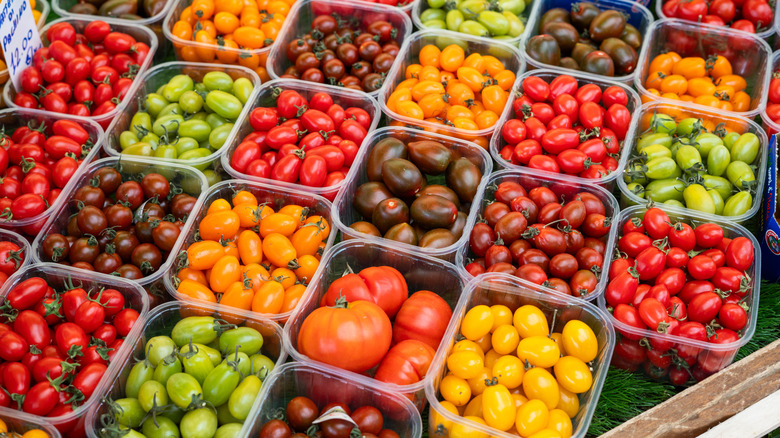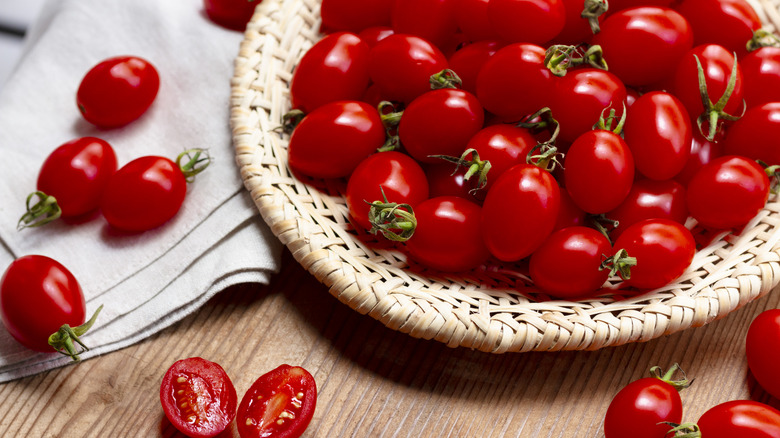The Only Tomatoes You Should Buy During The Winter
Tomatoes are a quintessential summer food. Peak tomato season varies slightly based on location, but for the most part, May through October is when you will find perfectly ripe tomatoes of every variety, ranging from beefsteak to heirloom, roma, and everything in between. Summer tomatoes are a flavorful and refreshing addition to salads and hamburgers but are equally delicious cooked down into a warm dish.
While grocery stores carry tomatoes year-round, there are some rules to remember when buying tomatoes out of season. During the winter months, larger tomatoes, such as beefsteak or heirloom, just aren't going to taste as good, and their texture may not be quite right. But, don't worry — if it's the middle of winter and you're dying for a BLT pasta salad or a refreshing Caprese salad, you don't have to deprive yourself. Smaller types of tomatoes, such as cherry or grape, should be your go-to choice when the tomato craving strikes during the winter.
Why small tomatoes do just fine in the winter
Why don't bigger tomatoes fare too well in the winter while smaller ones remain mostly unaffected? The answer lies in the water content of the tomato and when it is harvested. Cherry and grape tomatoes are still going to have that sweet, tomato taste because of their low water content and compact size, whereas a beefsteak or heirloom will taste watery and look pale in the winter months because they have a much higher water content.
More than half of the tomatoes you'll see in grocery stores during the winter were shipped in from Mexico. To accommodate for travel times, tomatoes are usually harvested while they're still green and haven't had time to naturally develop their flavor. These tomatoes are often sprayed with ethylene gas to artificially speed up the ripening process, resulting in a pale and tasteless fruit. However, during the summer months, locally grown tomatoes are widely available, and therefore shipping time no longer matters. Tomatoes in the summer are kept on the vine longer — until their color changes or after — allowing them to reach their full flavor potential.
Besides the lower water content allowing for a more concentrated flavor, smaller tomato varieties also grow well in controlled environments like greenhouses, alleviating the need to import them from a warmer, far-away location. The bottom line is that smaller tomatoes are the way to go in the winter. They'll hold you over until the days when summer sun-ripened tomatoes are plentiful.

